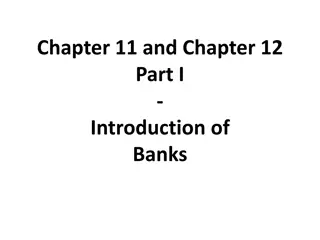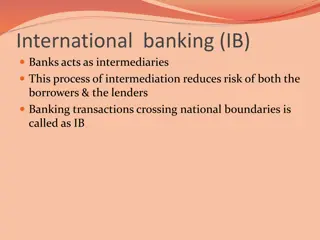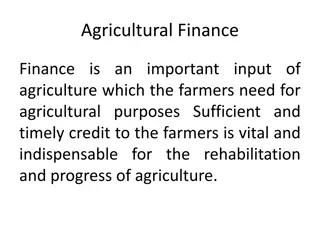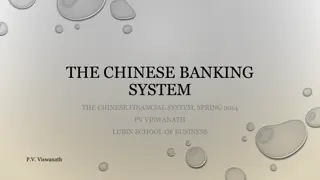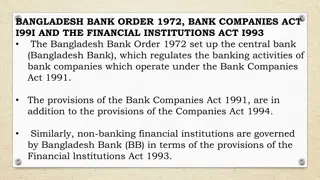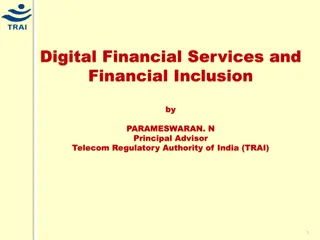Agricultural Finance and Banking System Overview
Agricultural finance encompasses various services to support farm activities, with sources including institutional and non-institutional channels. In India, agricultural credit is available from sources like moneylenders, co-operatives, and commercial banks. Commercial banks play a crucial role in providing financial products and loans to individuals and businesses. The nationalization of banks in India aimed to distribute economic power, mobilize resources, prevent monopolies, and ensure balanced regional development.
Download Presentation

Please find below an Image/Link to download the presentation.
The content on the website is provided AS IS for your information and personal use only. It may not be sold, licensed, or shared on other websites without obtaining consent from the author. Download presentation by click this link. If you encounter any issues during the download, it is possible that the publisher has removed the file from their server.
E N D
Presentation Transcript
Sources of Agricultural -Finance Agricultural finance is the provision of multiple types of services dedicated to supporting both on- and off- Farm agricultural activities and businesses including input provision, production, wholesale, processing and marketing and distribution,
Agricultural credit in India is available to farmers and other people working in the farming sector in India from various sources. Sources of agricultural credit can be broadly classified into institutional and non-institutional sources. Non-Institutional sources include moneylenders, traders and commission agents, relatives and landlords, Institutional sources include co-operatives, commercial banks including the SBI Group, RBI and NABARD
Commercial Banks and its Functions A commercial bank is a type of financial institution that accepts deposits, services, makes various loans, and offers basic financial products like certificates of deposit (CDs) and savings accounts to individuals and small businesses Regulator : RBI offers checking account
Commercial banks are of three types, which are as follows: Public Sector Banks: Private Sector Banks: Foreign Banks
What is Nationalization of banks The process of transferring ownership and operational rights of a bank from private or trusts to the government of the country. In India also, 14 leading banks were nationalized on July 18, 1969. Each one s deposits were more than Rs 50 crores. Their share in total deposits and advances were almost two third of all scheduled banks in nation
Objectives Of Nationalization To reduce concentration of economic powers with only a few industrial magnets and to prevent monopolies. Mobilize resources even from backward and rural areas To prevent lopsided regional development To prevent corruption and misuse of firms: the trustees were only benefiting from huge resources and it was at the cost of general development in the country
Features of Micro- finance: It is a tool for empowerment of the poorest. Delivery is normally through Self Help Groups (SHGs). It is essentially for promoting self- employment, generally used for: It is a tool for empowerment of the poorest. Delivery is normally through Self Help Groups (SHGs). It is essentially for promoting self- employment. It is not just a financing system, but a tool for social change, specially for women. Because micro credit is aimed at the poorest, micro-finance lending technology needs















